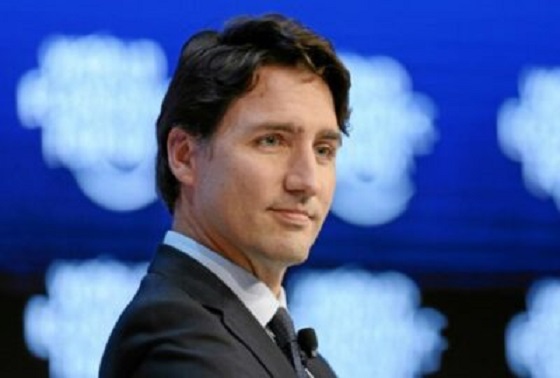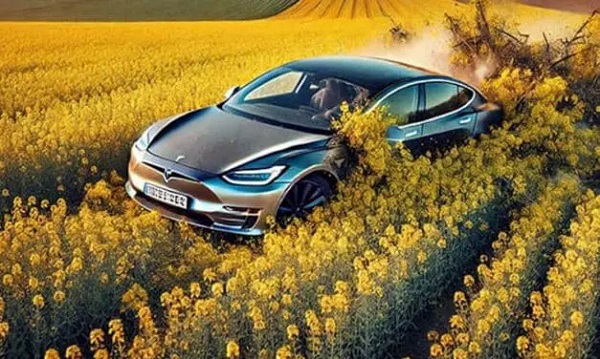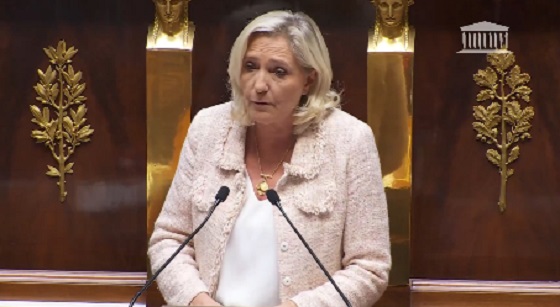Automotive
Federal government should face facts—the EV transition is failing

From the Fraser Institute
” public charging infrastructure isn’t keeping pace with predicted consumer adoption of EVs, and as noted in a recent study published by the Fraser Institute, targets for consumer adoption of EVs are out of sync with historical timelines for the development of metals needed to make them “
A series of recent headlines in the Wall Street Journal reveal the extent to which government plans in Canada and the United States, to transition surface transportation from internal combustion to battery-electric power, are already showing signs of failure. “Ford Cuts Lightning Output in Latest Sign of EV Downshift,” reads one article while the editorial page says “The EV Backlash Builds: Companies cut output amid flagging demand” and “The Electric Vehicle Push Runs Out of Power.”
And there’s evidence the electric vehicle (EV) transition is also stalling in other countries. In Germany, EV sales are in freefall as the cash-strapped government tapers off subsidies for EVs. Battery EV registrations dropped 29 per cent from the previous year while plug-in hybrid registrations dropped 35 per cent year-over-year.
Manufacturers are also pulling back from the EV market. Recently, only a year after announcing a US$5 billion joint venture between GM and Honda to develop affordable EVs, the two auto giants pulled the plug on the venture. Even in China, which planned to be the world’s dominant supplier of EVs and batteries, is finding the transition hard to sustain. As Bloomberg reports, “China’s Abandoned, Obsolete Electric Cars Are Piling Up in Cities.” The subhead of the article explains, “A subsidy-fueled boom helped build China into an electric-car giant but left weed-infested lots across the nation brimming with unwanted battery-powered vehicles.”
All of this should trouble the Trudeau government, which mandated that all new light-duty vehicles sold in Canada be EVs by 2035 and has poured taxpayer dollars into the predicted future EV and battery production industry. For example, $28 billion for two EV battery plants (Stellantis-LG and Volkswagen), $2.7 billion for a new battery manufacturing plant in Montreal (which will also get $4.6 billion in production incentives with one-third coming from Quebec), and $640 million for a new Ford electric vehicle factory (also in Quebec). Government has made other smaller investments in rare earth mining and refining to incentivize production of the metals needed to make EV batteries. And of course, all this “investment” government comes atop consumer incentives to convince people to buy EVs. The federal government offers incentives up to $5,000 for the purchase of light-duty vehicles, and up to $2,000 for medium-heavy duty vehicles. Seven Canadian provinces offer additional subsidies.
Clearly, the Trudeau government is betting heavily, with the limited resources of Canadian taxpayers, on an EV future that increasingly looks unlikely to happen. Governments around the world are running out of money to subsidize EVs, consumers are increasingly reluctant to buy EVs, public charging infrastructure isn’t keeping pace with predicted consumer adoption of EVs, and as noted in a recent study published by the Fraser Institute, targets for consumer adoption of EVs are out of sync with historical timelines for the development of metals needed to make them, insuring a bottleneck situation in the not-too-distant future.
In fact, to meet international EV adoption pledges, the world would need 50 new lithium mines by 2030, along with 60 new nickel mines and 17 new cobalt mines. The materials needed for cathode production will require 50 more new mines, and another 40 new mines for anode materials. The battery cells will require 90 new mines, and EVs themselves another 81. In total, this adds up to 388 new mines. For context, as of 2021, there were only 270 metal mines operating in the U.S. and only 70 in Canada. And mine development timelines are long—lithium timelines, for example, are approximately six to nine years, while production timelines (from application to production) for nickel are approximately 13 to 18 years.
The writing is on the wall. The Trudeau government should reconsider the reckless gambling with taxpayer money that its EV agenda represents. It should withdraw the “investments” where it can, and reconsider the country’s 2035 all-EV mandate. These all look increasingly like bad bets, with Canadian taxpayers being the ultimate losers.
Author:
Automotive
Canadians rejecting Liberal’s EV mandates because consumers are rational

From Resource Works
Bad policy, not misinformation, is to blame for the decline in EV sales
It was a clever move for federal minister Gregor Robertson to stand in Victoria and blame the oil and auto industries for spreading “misinformation” about electric vehicles.
If people don’t follow a government order, then someone else must have lied to them.
But the truth is simpler, and more uncomfortable for Ottawa and Victoria: Canadians are against aggressive EV mandates because the policies behind them are not based on reality.
Politicians have been pushing electric vehicles (EVs) as a cornerstone of the fight against climate change for years, promising a cleaner future through ambitious mandates and generous rebates.
All of this effort looked good on paper: passing laws, handing out thousands (millions, billions) in subsidies, paving the way for Canada’s transition to an electric future.
But, in real life, it’s just not working out this way.
Why? Because instead of crafting long-term rules based on the realities of infrastructure, cost, and consumer choice, Ottawa rushed ahead with policies that ignored market signals.
They assumed subsidies would keep EV sales flowing indefinitely, only to be shocked when sales plummeted once the rebates dried up.
Canadians are responding rationally to high prices, unreliable charging networks, and impractical mandates.
Not long ago, Ottawa set ambitious, unattainable targets: 20 percent zero-emission vehicle sales by 2026, 60 percent by 2030, and 100 percent by 2035.
British Columbia went further, aiming for 26 percent by 2026, 90 percent by 2030, and 100 percent by 2035.
In theory, it looked achievable. In practice, it’s been a wake-up call.
The numbers tell the story. Statistics Canada reported that EVs accounted for 18.29 percent of new vehicle sales in December 2024. Just four months later, when Ottawa’s iZEV program ran out of funds and provincial rebates ended, that figure crashed to 7.53 percent.
In British Columbia, once a leader in EV adoption, the market share dropped from nearly 25 percent in mid-2024 to 15 percent a year later.
Quebec, long the most EV-friendly province, saw a similar decline when its $7,000 subsidy was slashed nearly in half.
Why? Canadians have been very clear.
Cost is the biggest barrier, according to polls like this one from Ipsos in 2025. But this isn’t the only issue.
Ipsos found 56 percent of British Columbians oppose EV mandates, with even higher resistance among older households and those outside Metro Vancouver. People resent being told they must buy expensive cars they can’t easily charge or fully trust in harsh winters.
Subsidies made high sticker prices tolerable for middle-class families, but when the rebates vanished while mandates and fines remained, buyers walked away.
Barry Penner of the Energy Futures Institute put it bluntly: governments “put the cart before the horse,” demanding widespread adoption before ensuring affordability or infrastructure.
The financial penalties for automakers are steep. Missing federal targets by 10 percent could mean hundreds of millions in fines.
In British Columbia, dealers face $20,000 penalties for every gas-powered car sold over the mandated ratio. Those who can’t comply often buy credits—frequently from Tesla, a California-based company that benefits while Canadian businesses foot the bill. These rules aren’t just hitting “Big Oil”; they’re straining local dealers and sending money abroad.
Infrastructure is another glaring issue. Ottawa estimates Canada has 33,700 chargers today but needs 679,000 by 2040—an average of 40,000 new chargers annually for 15 years, a pace experts call unrealistic.
In British Columbia, Penner notes the province has just 5,000 chargers now and needs 40,000 more by 2030. Meeting the 2035 mandate would also require electricity equivalent to two additional Site C dams, even as B.C. relies on 20 to 25 percent of its power from external sources, often fossil fuels.
Canadians aren’t against cleaner technology—they’re against being forced into choices that don’t fit their lives. The frustration stems from policies that feel disconnected from the realities of cost, convenience, and infrastructure. More blame or moralizing won’t fix this.
Penner has urged governments to “take our foot off the gas and realign our policies with reality.”
That could mean reinstating rebates if mandates persist, investing heavily in charging networks, or setting broader emissions targets that give consumers real choices instead of rigid quotas.
The EV dream will keep stalling unless that happens. It’s not because Canadians don’t know what’s going on; it’s because governments made decisions based on wishful thinking.
Agriculture
Canola or cars? Canada can’t save both

This article supplied by Troy Media.
 By Doug Firby
By Doug Firby
Canada is risking its most successful export to prop up an EV pipe dream
Picture a Canadian industry that contributes $43 billion to the economy and employs about 200,000 people.
There aren’t many of those in this country. Any industry of that size should be considered indispensable.
And yet, while there is (understandable) national hand-wringing over the future of Canada’s auto industry—especially in light of U.S. President Donald
Trump’s renewed tariff rampage—another industry, arguably more economically important, is being dangerously overlooked.
That industry is canola.
A summer drive through Manitoba, Saskatchewan or Alberta makes the scale hard to miss. Yellow fields stretch to every horizon. Canola production has exploded over the past decade and has become the very lifeblood of the Prairies.
Without it, large parts of those provinces would be economically barren and far more sparsely populated. We’re not talking about niche agriculture here—we’re talking about a foundational industry that keeps the lights on across three provinces.
Canada is the world’s largest exporter of canola, a crop used to produce cooking oil, animal feed and biofuels. Its export-driven success makes it a cornerstone of the Prairie economy.
Now consider this: Canada’s auto manufacturing industry contributes about $19 billion annually to GDP and employs around 125,000 people directly in assembly and parts manufacturing. Include distribution and aftermarket services, and you get a bigger figure, but the core numbers still pale in comparison to canola.
So, here’s the uncomfortable question: If you had to sacrifice one, which would it be?
It’s a Hobson’s choice. Nobody wants to lose either. But Canada has been pushed into a position where something has to give.
The Trudeau government—and before that, the Biden administration—imposed 100 per cent tariffs on made-in-China electric vehicles (EVs). The logic was straightforward: protect the billions being pumped into Canada’s auto sector and turn the country into a hub for EV innovation and production.
It was a defensive move: one meant to slow China’s dominance in the global EV market and give domestic manufacturers room to grow. Without it, cheap, wellbuilt Chinese EVs would undercut Canadian and North American models before they ever left the factory floor.
But China doesn’t take these things lightly. In retaliation, it slapped a 76 per cent tariff on Canadian canola. Prairie farmers, many of whom are already grappling with rising costs and unpredictable weather, are now wondering if their main market is disappearing overnight.
China has long been Canada’s largest canola customer, though the relationship has had flare-ups, including temporary bans in past years tied to diplomatic disputes.
More than two-thirds of Canada’s exported canola goes to China. The latest tariff hike has already wiped out an estimated $1 billion in value. And there’s no clear end in sight.
Manitoba Premier Wab Kinew was blunt last week: Canada cannot afford to be in a trade war with both the United States and China. He suggested that, in the short term, Ottawa should direct EV tariff revenues to support canola producers. That may buy us some time. But the broader strategic question looms larger: With the U.S. under Trump becoming an increasingly unstable trade partner, and China punishing us for playing by American rules, where does Canada place its long-term bet?
It’s not an easy question to answer.
China is hardly an ideal partner. Its human rights record is abysmal, and its growing economic power often comes with strings attached. But we also can’t deny that it has already become the global manufacturing centre in many key sectors—including electric vehicles.
Then there’s the U.S. A longtime ally, yes, but under Trump, all bets are off. In January, he said of Canada, “We don’t need anything they have.” Not cars. Not oil. Not even niceties.
CUSMA—the Canada–United States–Mexico Agreement that replaced NAFTA—governs most of Canada’s trade with our two largest partners. If Trump reopens the deal—and with Trump, it’s usually safest to take him literally—the Canadian auto industry may not survive. Billions in subsidies and protective tariffs won’t matter if the largest market slams its door shut.
So, again: what should we protect?
New markets for canola are being pursued—in Europe, Japan and elsewhere. But they won’t match China’s scale anytime soon. Diversifying export markets takes years. Prairie farmers don’t have that kind of time.
Meanwhile, dreams of building a Canadian-made EV remain just that: dreams. The auto sector may eventually pivot and survive, but right now, it’s the one on life support. Canola is the industry that’s vibrant—unless we let it get crushed in a trade crossfire.
I lived in an auto town for over two decades. I know the stakes. I’ve seen what happens when plants close, when supply chains dry up, and when livelihoods vanish.
But we need to be realistic.
Canola is a winning industry. It feeds the economy, supports thousands of families and helps keep our rural communities alive. It doesn’t need endless
subsidies or federal cheerleading—it just needs stable access to markets.
That might mean giving ground on EV tariffs. That might mean swallowing some pride on the international stage. But Canada cannot afford to sacrifice a thriving sector to save one already on the brink.
If we’re going to make hard choices—and we will—let’s make the one that protects what still works.
Canada cannot lose canola.
Doug Firby is an award-winning editorial writer with over four decades of experience working for newspapers, magazines and online publications in Ontario and western Canada. Previously, he served as Editorial Page Editor at the Calgary Herald.
Troy Media empowers Canadian community news outlets by providing independent, insightful analysis and commentary. Our mission is to support local media in helping Canadians stay informed and engaged by delivering reliable content that strengthens community connections and deepens understanding across the country
-

 espionage2 days ago
espionage2 days agoInside Xi’s Fifth Column: How Beijing Uses Gangsters to Wage Political Warfare in Taiwan — and the West
-

 Censorship Industrial Complex2 days ago
Censorship Industrial Complex2 days agoDecision expected soon in case that challenges Alberta’s “safe spaces” law
-

 Education2 days ago
Education2 days agoOur kids are struggling to read. Phonics is the easy fix
-

 International2 days ago
International2 days agoBrazil sentences former President Bolsonaro to 27 years behind bars
-

 COVID-191 day ago
COVID-191 day agoWhy FDA Was Right To Say No To COVID-19 Vaccines For Healthy Kids
-

 Energy1 day ago
Energy1 day agoTrump Admin Torpedoing Biden’s Oil And Gas Crackdown
-

 Crime1 day ago
Crime1 day agoTransgender Roomate of Alleged Charlie Kirk Assassin Cooperating with Investigation
-

 Business7 hours ago
Business7 hours agoCarney Admits Deficit Will Top $61.9 Billion, Unveils New Housing Bureaucracy







